This year’s list hasn’t seen much change from the last, a welcome shift from last year’s slew of new introductions. What few changes there have been to existing models have usually been inoffensive, and there have not been many new-for-2012 models introduced. The Kia Soul and Toyota Prius, while still ugly, have dropped off the list due to the introductions of the Mitsubishi i-MiEV and Mini Cooper Coupe.
The criteria for this list remains mostly basically the same as it has always been. I don’t include models that aren’t sold in the United States. I don’t include models that sell in low volume (and volume is defined completely subjectively). I don’t include exotic, military, or special-purpose vehicles (so no super-cars, tanks, or postal trucks). It’s based entirely on my personal opinion of what looks good and what doesn’t.
I encourage your comments—whether they be nominations of ugly cars I may have missed, or impassioned defenses of the ones I didn’t. Feel free to vent your buyer’s remorse here too, if you happen to have purchased one of these monstrosities ;-).
The List
-
Honda Insight
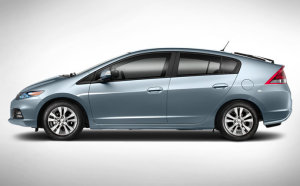
Honda Insight Honda’s shameless photocopy of the Toyota Prius remains while the Prius dropped-off this list because the Insight’s complete lack of originality makes it slightly uglier. Toyota cannot rest easy, however. As the Prius model expands into a gas/electric hybrid sub-brand I am confident that it will be making a return visit to this list in the future. I’ve said it before, and I’ll probably say it over and over and over again: a car doesn’t have to be ugly to be fuel-efficient. Why don’t the manufacturers seem to get this? I’d buy a hybrid in a heartbeat, if it were competitively spec’d and priced with its competition and didn’t look like a cheese wedge. -
Nissan Murano CrossCabriolet
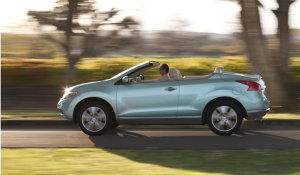
Nissan Murano CrossCabriolet Quite possibly the most inexplicable vehicle in over a decade, the Murano CrossCabriolet is a full-size crossover SUV with its roof cut off. Seriously. I’ve been spending a lot of time trying to figure out what it’s target market is, since there are plenty of great-looking convertibles out there that seat five without making you look like a fool. And if you want a crossover, you can get ones with a lot more space in them (and you can just open the windows if you want the summer breeze experience). Even if this thing had a clear target market, it would only appeal to the sub-set of that market completely lacking in taste. -
Toyota FJ Cruiser
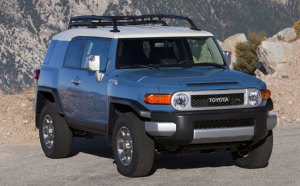
Toyota FJ Cruiser It’s the perfect car for ‘Off-Road Barbie.’ It has high ground clearance, big wheels, garish bright colors, and appears to be made entirely of plastic. Sure, the underlying chassis beneath the FJ Cruiser is just fine, and there’s no reason this car couldn’t tackle the toughest terrain you throw at it. But the terrain will probably very quickly decimate the obnoxious and cheap-looking plastic bits all over the exterior. This, like so many other ugly cars, is targeted at the ‘hip and trendy’ crowd . . . but only appeals to the crowd that wants to be ‘hip and trendy’ but doesn’t actually know what that means. -
Scion iQ
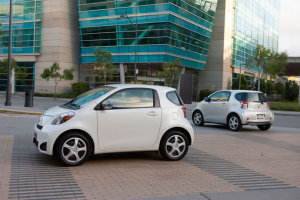
Scion iQ There’s a reason that micro-cars have never been particularly popular in the United States. For the vast majority of our populace, they just don’t serve our needs. They aren’t big enough to transport a family, they aren’t big enough to lug home the groceries or a piece of furniture, and they compete for road space against SUV’s and trucks hundreds of times bigger than they are. They’re really city-dweller cars, a half-step up from a motor-scooter with no benefit over their drastically-cheaper two-wheeled competition other than the roof and air conditioning. But at least a good scooter has some personality. The iQ, from Toyota’s Scion division, looks nominally better than its competition from Daimler’s Smart, but it’s still bland and unattractive. -
Smart Fortwo
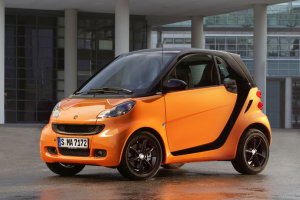
Smart Fortwo As I’ve said before, if a company has to tell you that its product is smart, that’s a sure sign that it isn’t. The first micro-car on the U.S. market, the Fortwo from Daimler’s Smart division, certainly made a mark . . . which isn’t always a good thing. Suffering from all of the shortcomings mentioned above in the discussion of the Scion iQ, the Fortwo is a bit less bland than its primary competition but it makes up for it by being more garish. The obnoxious two-tone styling doesn’t do it any favors, nor do the up-swept ‘fake eyelash’ headlights. The new marketing slogan from Smart is that the Fortwo is the ‘uncar.’ Indeed. Calling it a car would probably be giving it too much credit. -
Honda CR-Z
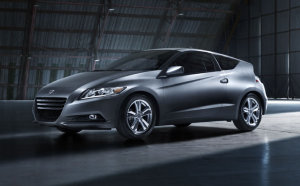
Honda CR-Z The CR-Z is another one of those hybrids designed entirely to look bad and call attention to itself. Like the Prius, Insight, and other ‘hybrid-only’ models, it sacrifices any chance at a real mass-market appeal by targeting the sanctimonious ‘look at me, I’m an environmentalist’ crowd. Gas/electric hybrids are a fine stop-gap on the way to electric or hydrogen fuel-cell cars, but they aren’t going to catch-on in the broader market until they look decent and are priced reasonably-competitively with their gas-only brethren. Some environmentalists buy these cars thinking it will make a statement about their love for the Earth. It makes a much stronger statement about their lack of discernment. -
Mini Coupe
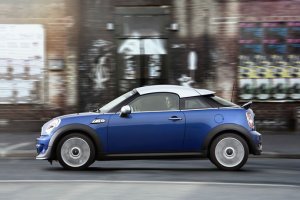
Mini Coupe BMW’s Mini brand rode a wave of nostalgia into the U.S. market a decade ago, and the standard Hardtop models look positively great. They have that perfect balance of retro and modern, and exude a personality all their own. Mini followed-up with the equally great-looking Convertible, the elongated Clubman, and the decidedly less attractive (but not ugly) Countryman SUV. Well the streak couldn’t last forever. New for 2012, Mini has introduced its first positively ugly car: the Mini Coupe. Up to its waist-line it looks fine, but the roof is a comedy of misshapen errors that completely ruins the entire thing. It looks like they bolted it together out of spare parts from completely unrelated cars. -
Nissan Cube
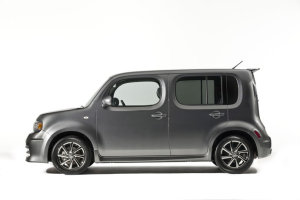
Nissan Cube Named for the most symmetric of shapes, you would think they at least could have made the Cube symmetrical. No, instead it looks different from each side and completely lopsided from the rear. Humans are naturally attracted to symmetry in a mate, and we are attracted the same way to symmetry in cars. The Cube, therefore, attacks our most base stylistic instincts. It is another fine example of a car company trying so hard to appeal to the young, hip, trendy customer that it instead attracts only elderly consumers who are desperate to appear young, hip, and trendy. -
Mitsubishi i-MiEV
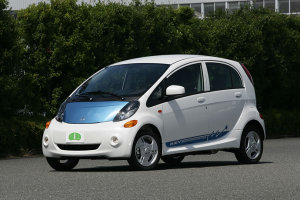
Mitsubishi i-MiEV New for 2012, the Mitsubishi i-MiEV will be the third mass-market electric car in the United States, following the market-leading Nissan Leaf and the grossly-overpriced (and technically not-fully-electric) Chevrolet Volt. While the Leaf and Volt both look okay, despite a bit of the standard ‘Earth-car’ garishness, the i-MiEV breaks with tradition and brings a down-right ugly electric car to the masses. It makes up for its un-attractiveness (a bit) by being about $6,000 less than the Leaf, but it only goes 60 miles to a charge (compared to the Leaf’s 100 and the Volt’s 40 [before its gas ‘range extender’ kicks in]). Mitsubishi could have had a long-overdue hit for its beleaguered North American division with a good-looking, affordable electric car. Is this really the best they have to offer? -
Nissan Juke
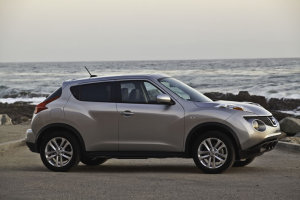
Nissan Juke Nissan’s frog-inspired Juke remains the ugliest mass-market car in America for 2012. Its headlights are in the wrong place, its fog lights are made to look like they come from a rally car, its tail lights look like deformed crab claws, it is shaped like a crossover but barely the size of a compact, and it just positively screams ‘I’m trying too hard.’ Just spend the extra $1,810 for Nissan’s much more pleasantly-styled Rogue crossover, please. It is worth spending an extra two-grand to avoid having to be seen in public driving one of these.
Dishonorable Mention
-
General Motors and Motors Liquidation Company

General Motors Having bilked the taxpayers out of many billions of our hard-earned dollars (in a time when our government can’t exactly afford to waste money), General Motors went through a gerrymandered bankruptcy process in 2009. In the aftermath, we were left with Motors Liquidation Company—the re-named, bankrupt hulk of what used to be General Motors. A new company was conjured out of thin air, which we promptly christened General Motors and gave possession of all the ‘good’ bits from the now-defunct same-named company of old. Clear as mud.
The ‘new’ General Motors was re-listed under the ‘old’ General Motors stock ticker on the New York Stock Exchange in late 2010, and the U.S. government sold off a large portion of its unconstitutionally-held ownership of the company. On the first day of trading, GM’s stock closed at $34.26/share. To hear GM’s leaders and our government interlocutors describe it, the future was bright for the ‘new’ General Motors.
Shareholders in the ‘old’ GM got nothing, and most of their creditors got nothing too, while the government—in its artificial position as a kind of ‘prime shareholder’ in the ‘new’ GM, recouped at least a significant portion of its illegal investments. Motors Liquidation Company was finally dissolved in December, ending the actual corporation that had once been known as General Motors after over 100 years in business.
Meanwhile, the ‘new’ GM doesn’t seem to have done very much with its largess from the taxpayers. Its stock is down to $21.05 as of today’s close, having lost nearly forty percent of its value from the 2010 IPO, and there is little sign of a turnaround. Their cars still lag in quality and reliability, and are uncompetitive and uninteresting compared to their foreign and even domestic competition (at least at Ford). For taking billions and billions of our dollars and wasting them, GM and MLC deserve a dishonorable mention.
